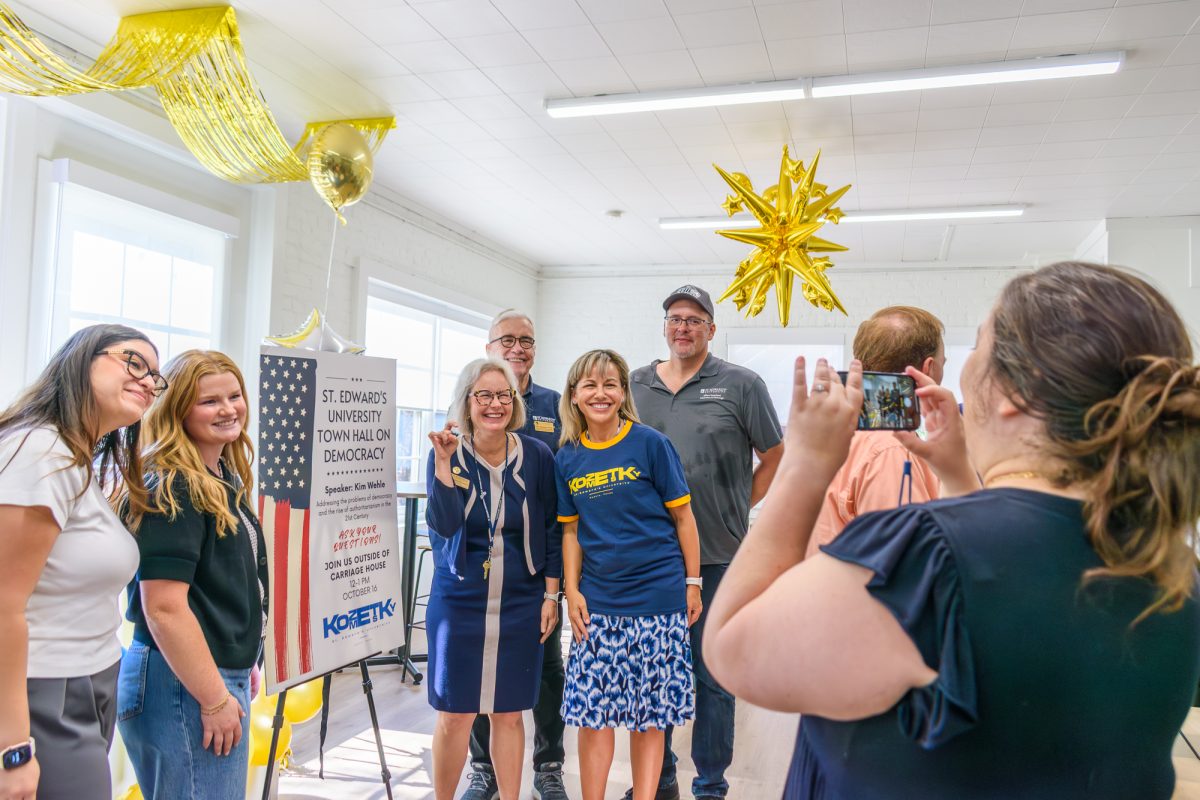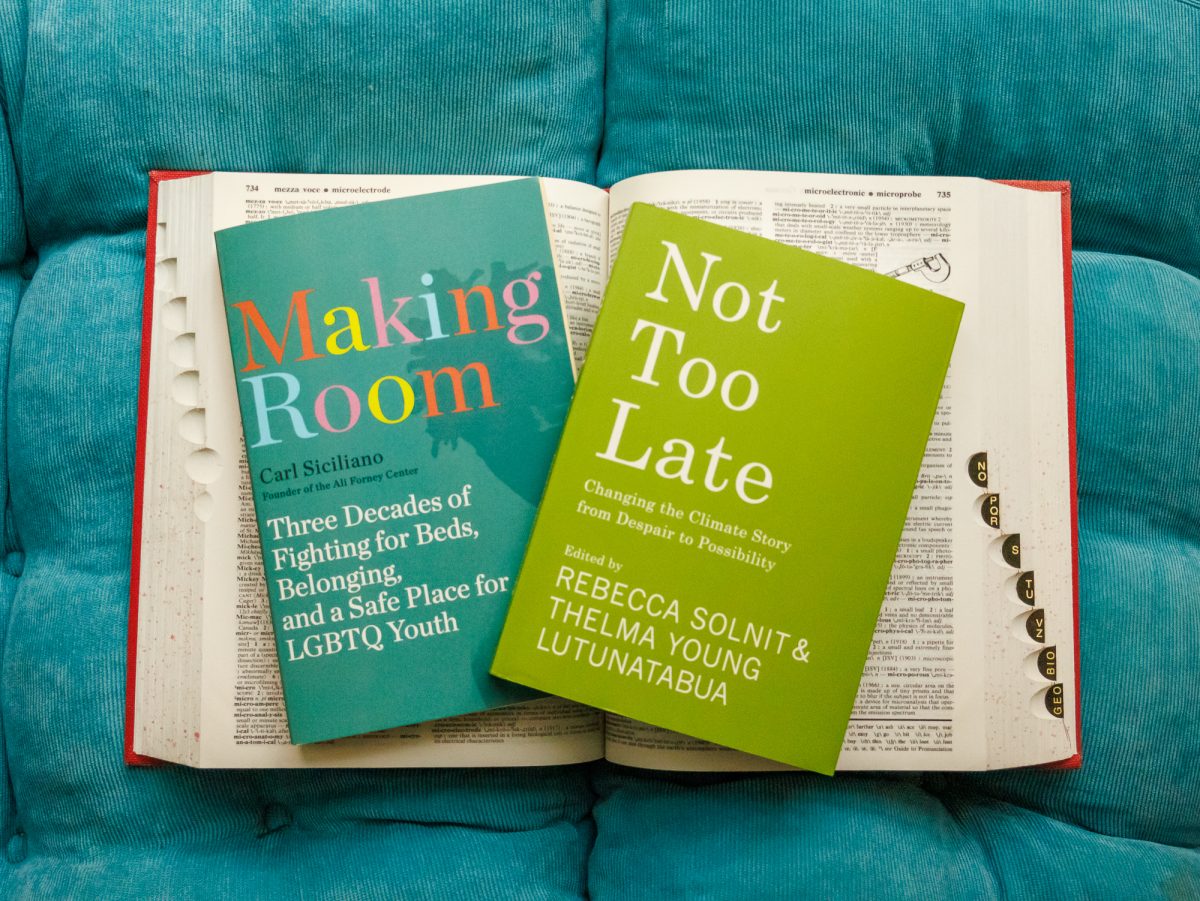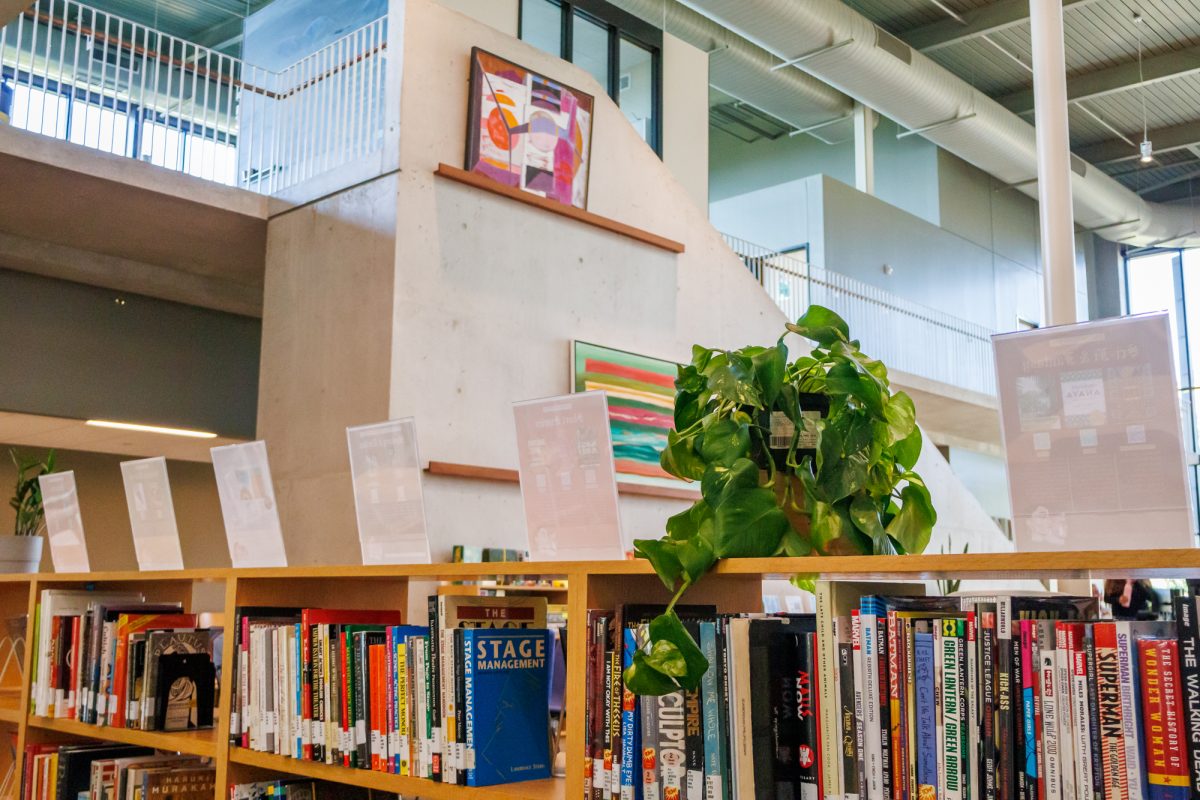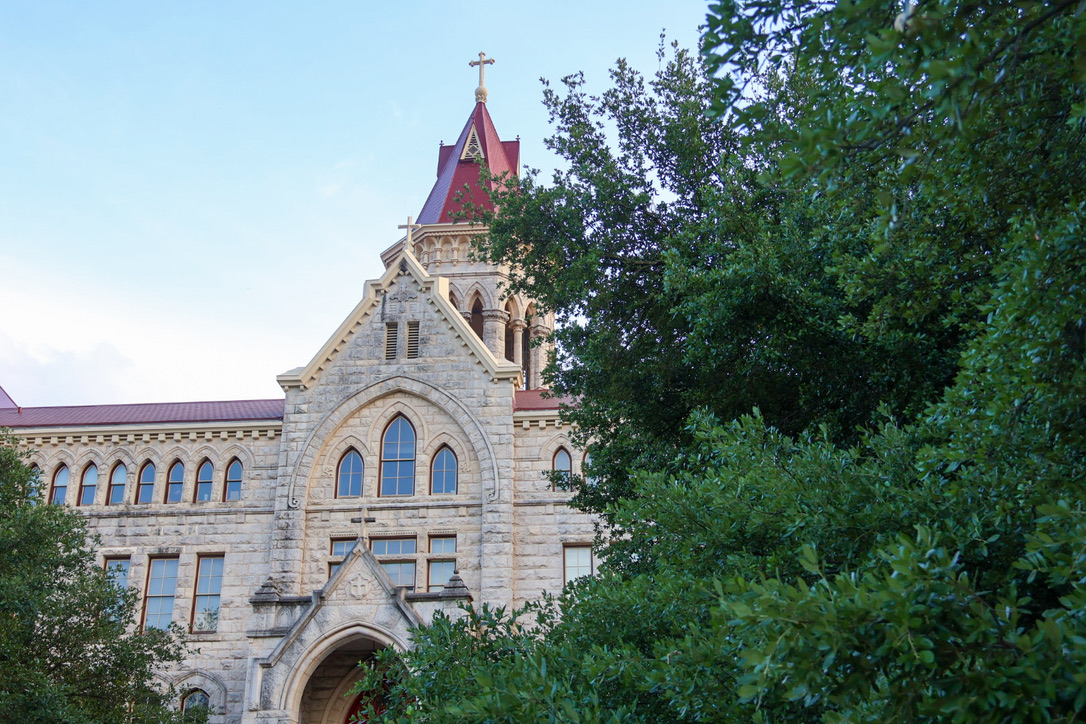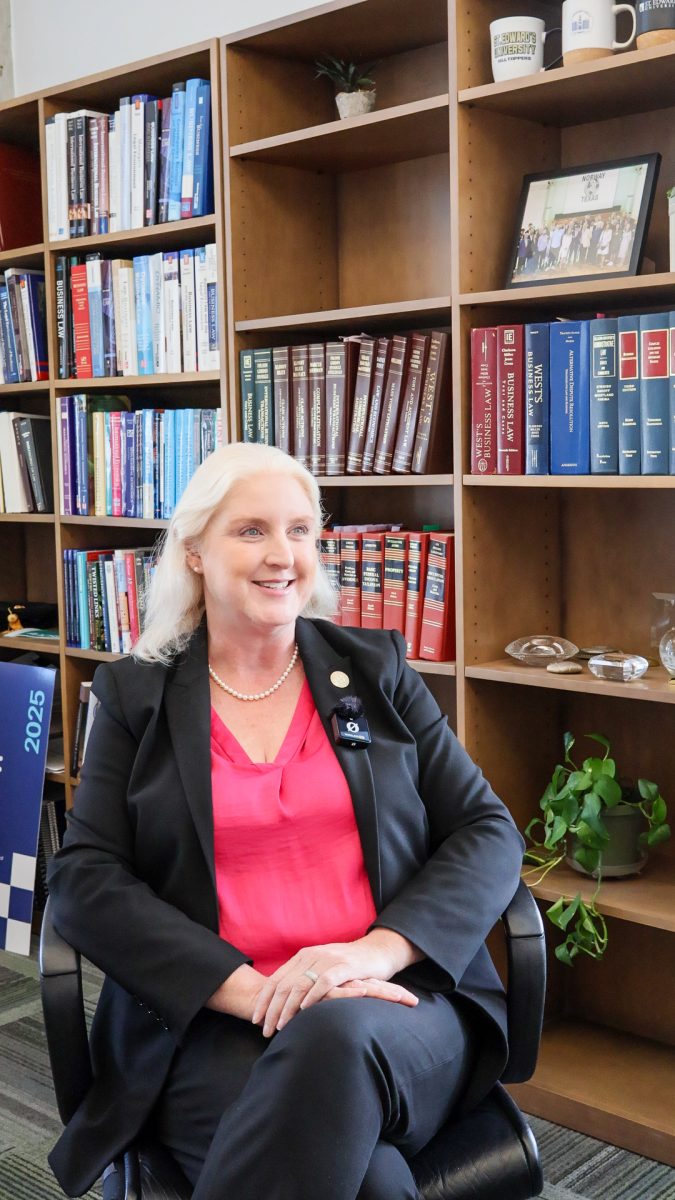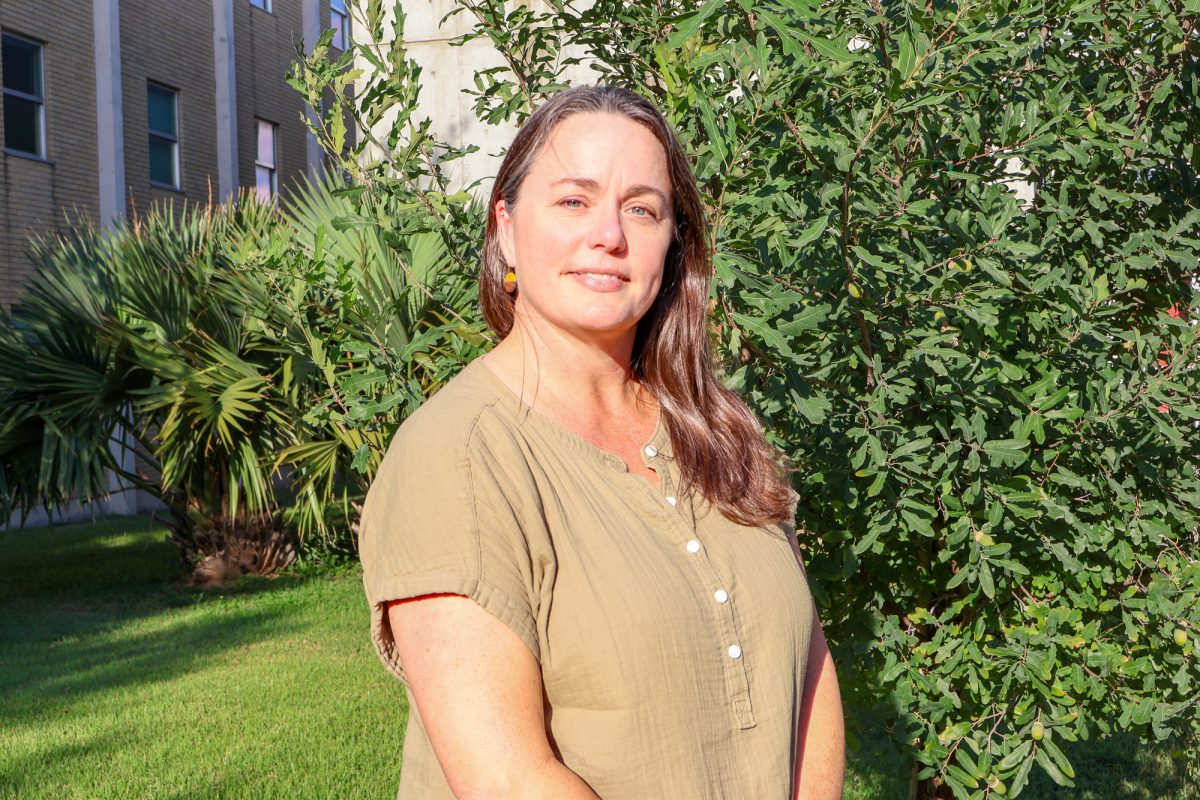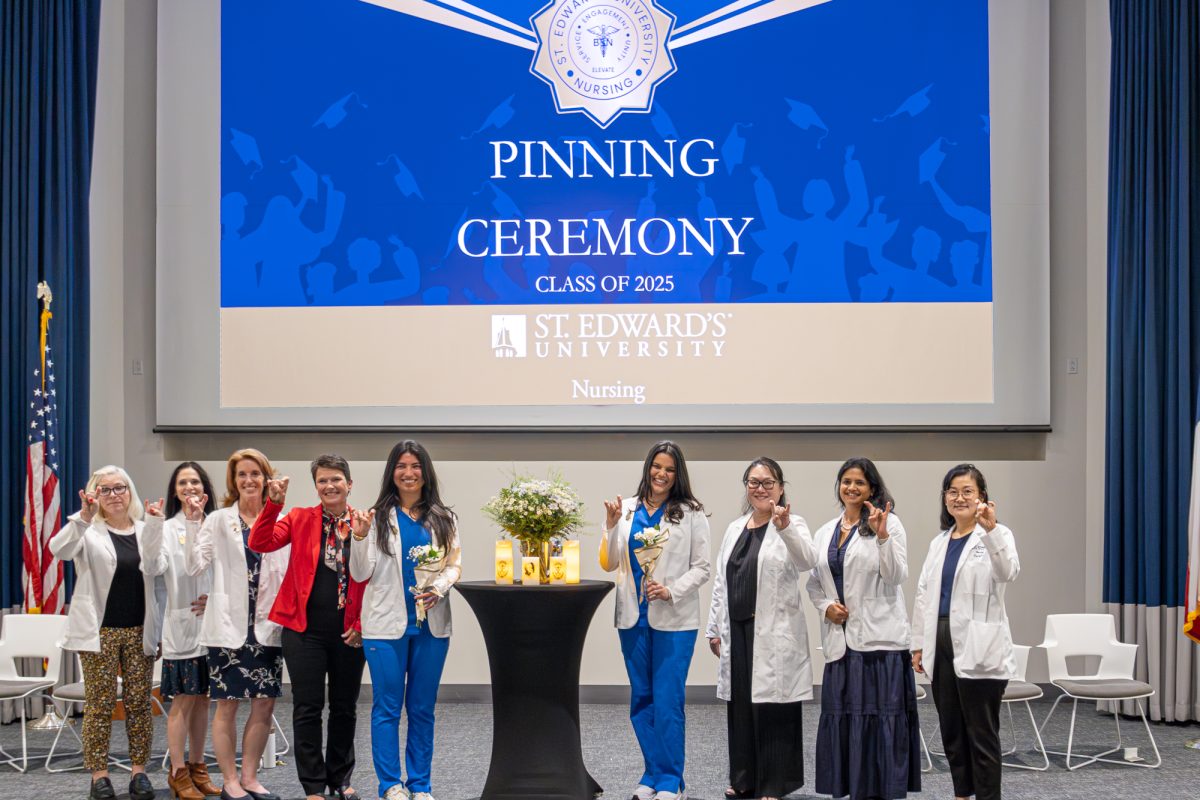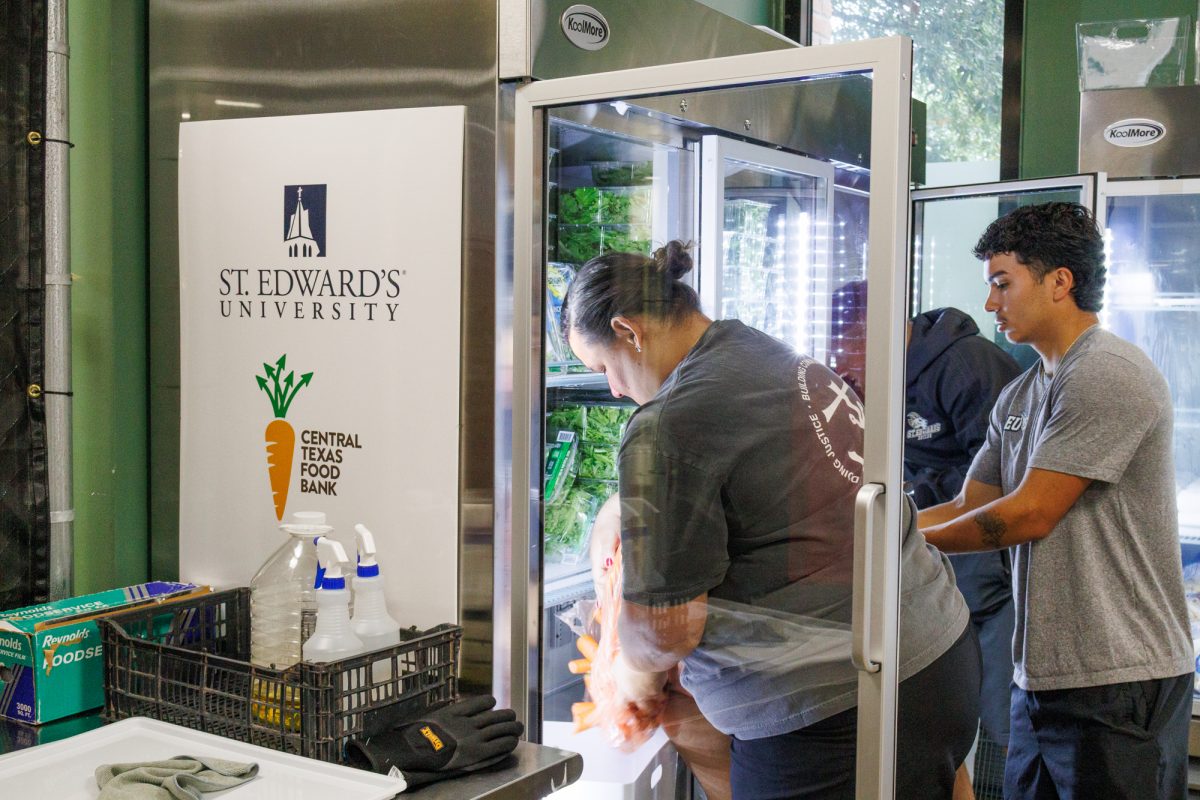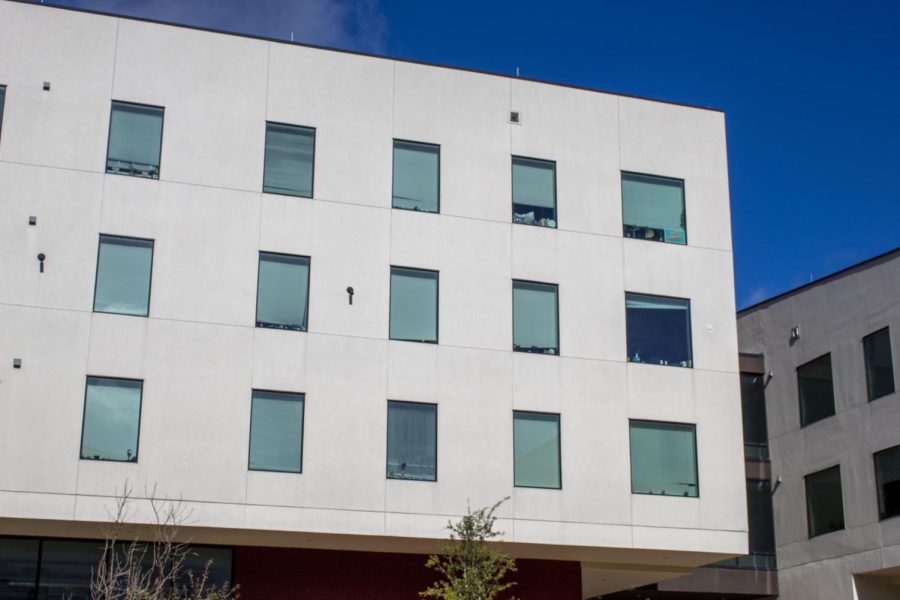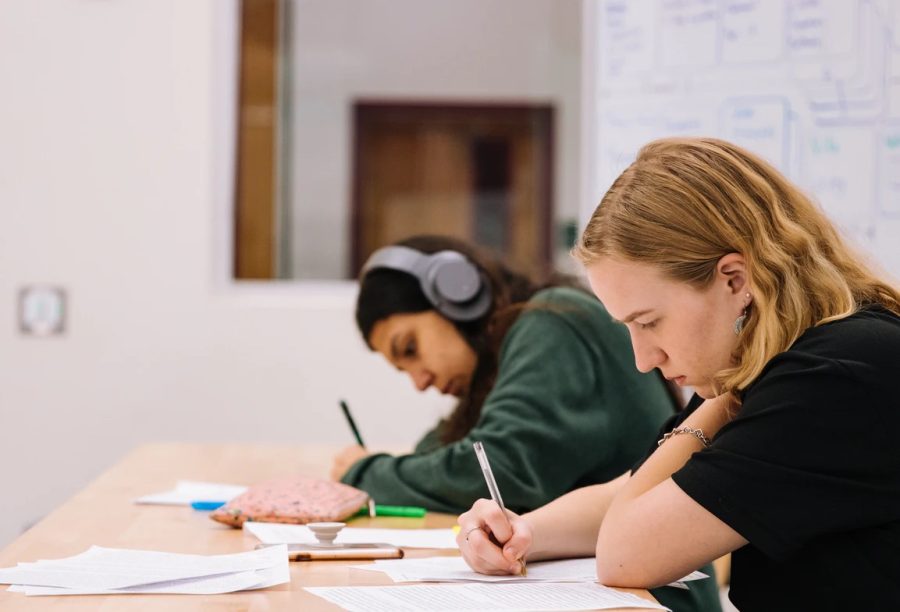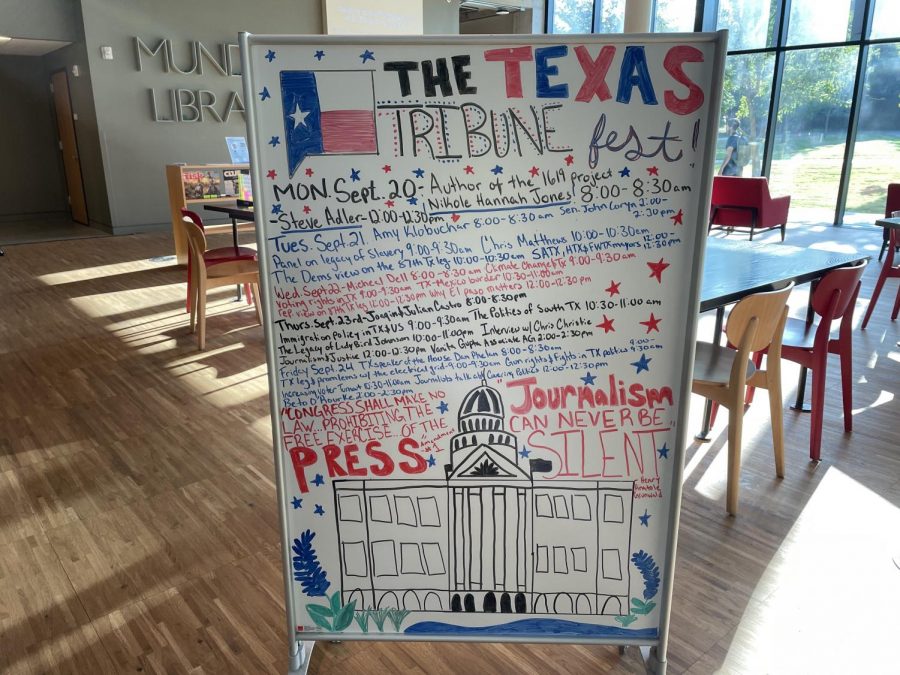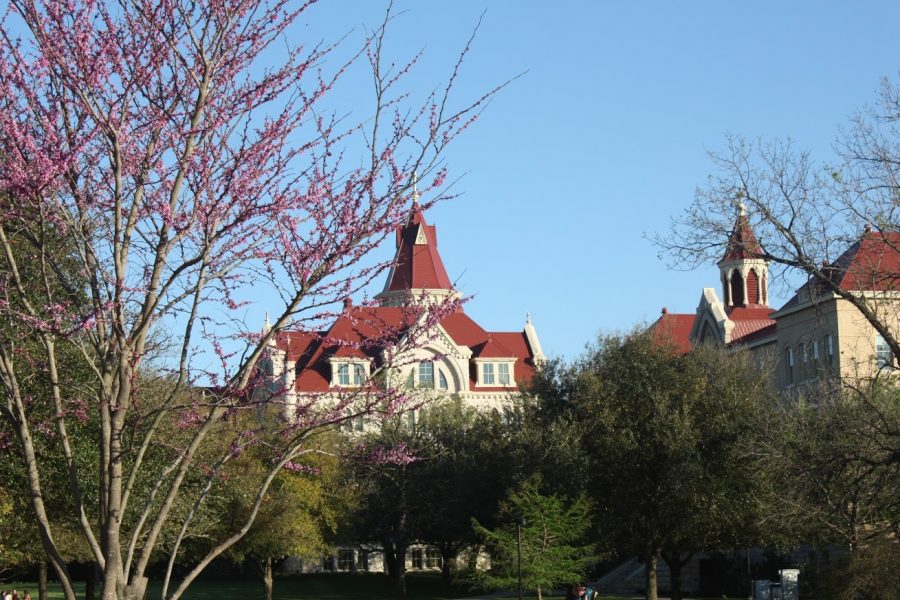Hilltop Views reporters Anna Pratts and Gabrielle Scherpereel sat down with Dean Sharon Nell of the School of Arts and Humanities to discuss new programs, student opportunities and her vision for the school. This interview has been edited for length and clarity.
Tell us about yourself, your position here, your background, and what brought you to St. Edward’s.
I’m Sharon Nell. I’m the Dean of the School of Arts and Humanities. I’ve been at St. Edwards now for over 13 years. I’ve started my 14th year as Dean. I came here as Dean in the summer of 2012. My previous institution was Loyola University, Maryland, in Baltimore…
And why was I drawn to the role here? Well, I love the mission. If you look at the back of my door, you’ll see an excerpt from Matthew 25. I love the fact that St. Edward’s strongly supports Catholic social teaching, and that is something that has really meant a lot to me because my role as Dean is to find ways for students to succeed. And because I know, as a first-generation college student, how much it means not only to the student who succeeds, but to their entire family,when you get that college degree.
How would you say past opportunities at universities such as TTU & Loyola have shaped who you are as Dean?
I’ve been in this business for a long, long time, and from the very beginning of my career over 35 years ago, I’ve had administrative responsibilities, and they were sort of low-level administrative opportunities. My field is French. I was a French professor for over 20 years. Even with my first job, I was responsible for maintaining the language lab equipment, which was located in a closet at the University of Houston downtown. So this was a long time ago. And then with my second job at Drury College, they made me the head of the French program and the language lab director. So I was in charge of those kinds of administrative tasks at Texas Tech. I coordinated first-year French for about 12 years, and I supervised the graduate students, who were also graduate teaching assistants in the French program. So I have an affinity for administrative work. When I had the opportunity to go to Loyola in 2005, I was serving as chair of the Department of Modern Languages and Literature. And so that was really a very big deal to get to go and advocate for languages within the context of a Jesuit university.
How would you describe the school of arts and humanities in three words?
Creative, inspirational, career-oriented.
What sets our school apart from surrounding institutions?
Well, in many universities, you have a College of Arts and Sciences. And so what we have here, as BSS, Natural Sciences, and Arts and Humanities, (which), at many universities, would be one college. So we’ve got those three parts rather than one large administrative unit. And the neat thing about that is that it allows the dean to really get to know all of the disciplines that are within those individual schools. So I am able to go to art openings. I’m able to go to theater productions, to the Marcia Kinsey visiting writers series, and to the McCarthy lecture every year. So it allows me to really be very active and to get to know the programs really well, to get to know students like yourselves, and to be really involved with my departments and supporting the faculty.
If you were to attend the School of Arts and Humanities today, what would you pick as your major?
Oh my gosh! You would ask that! Because of the way that we have organized our programs and fashioned them, it’s really very possible to major in more than one thing. You can have a double major. There are all these exciting minors that you can also take advantage of. We have four really great credit-bearing undergraduate certificates. So I think that I would sort of craft my college experience in multiple ways, study something that I really love. And I have to say that I still really love languages. That’s really where my love has always been ever since I was about 14 years old. But I’m also someone who loves technology, so I would want to do something that has technology involved. And I’ve always said that in my next life, I want to come back as an art historian. So I would like to major in art history.
How do smaller class sizes benefit the Arts and Humanities community?
It’s not so much the class size, more how it’s organized. So you might be in a class where you’re working in a group with students on a project or you might be in a studio art class. Everybody is working on their art or an exhibition together. It’s really very bonding to have those experiences where you’re working together. In our creative writing classes, students are workshopping and working with their peers. It’s very much a community situation.
Can you talk about the things that the school itself offers that benefit the students?
There are so many ways to get involved, and many students don’t realize that they’re open to all, such as being in Hilltop Views without being an English major. Along with writing, students can be involved with school productions by trying out for a role or helping with set design. There are so many ways to get involved.
What events are you looking forward to this year?
Well, I’ve already been to the art gallery that opened last Thursday, and we’ve had shows opening up at Mary Moody Northern Theatre, such as “In The Amazon Warehouse Parking Lot,” “Much Ado About Nothing” and “Urinetown.” I always try to attend all the events, and that includes the Marcia Kinsey visiting writers series and senior shows that will be exhibited for photography. I try to attend it all to see all the achievements of students.
Can you talk a little about Arete and Sorin Oak Review?
It’s a collaboration between the visual arts and creative writing. Students can submit their work to the Sorin Oak Review and get it published. Arete is more where students come together to produce an academic journal of nonfiction essays, analyses, Capstone papers, and commentary.
What are some of the academic plans that we can look forward to?
We just approved a new major, bilingual health communication, which was launched just a few weeks ago. One of the things it does is that it leverages Spanish that students bring from past experience, and it builds on their Spanish knowledge within a medical context. That’s an exciting one because of the new health science school. We also have a new certificate in language and international experience. This basically has students do additional language training beyond the general requirement. It becomes a really useful tool in studying abroad and provides the international experience needed to obtain the certificate.
What is a piece of advice you would give to those freshly coming into the School of Arts & Humanities?
Connect with your faculty members. A lot of times, students are hesitant to take advantage of office hours, but the faculty are very welcoming and want you to come to their office. I would say go and visit them during office hours, even if it’s just to figure out where their office is or to touch base with them. If you have quotations about assignments, ask them! This is what we live for as faculty members.
Reach out to your faculty member and always go to class. Make friends in your classes. These could end up being your friends for life, and they will make your college life much more meaningful.
How do you think that a degree from St. Edward’s School of Arts & Humanities is beneficial in today’s job market?
Employers are more and more really prioritizing human skills or soft skills. These are things like critical thinking and the ability to work in groups. All of these attributes come from courses and programs within Arts & Humanities. My advice to students is to know what AI is and know the way these things are evolving in the job market, but don’t forget to elevate those soft skills in your resume because AI can only parrot things back to you and repeat things the world already knows.

